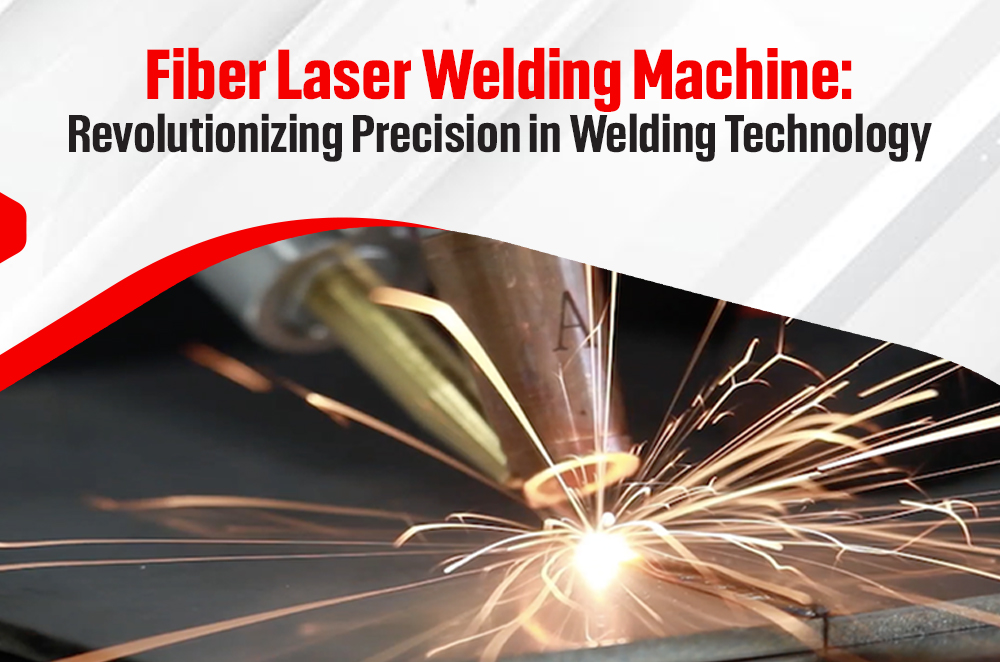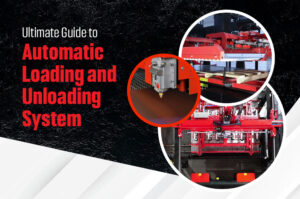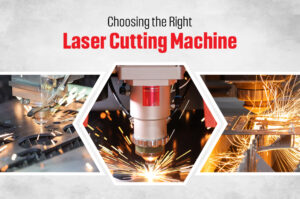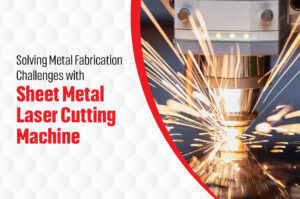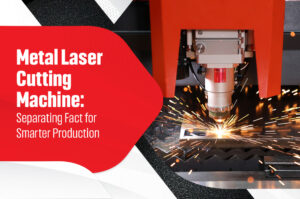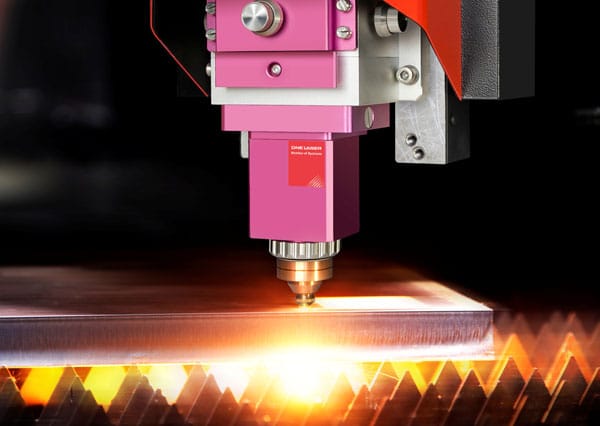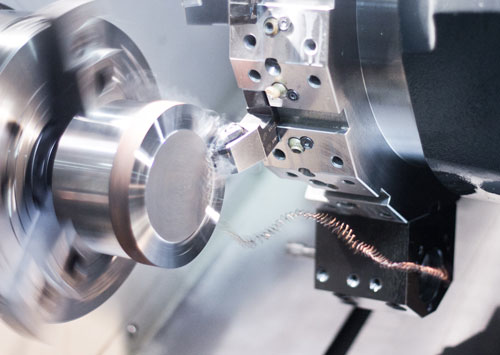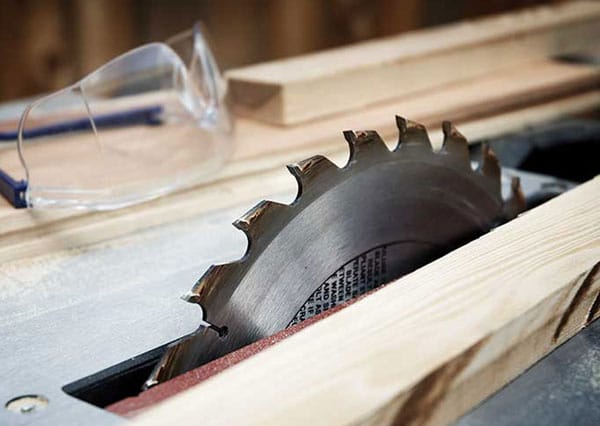The fiber laser welding machine is revolutionizing the manufacturing industry’s materials in welding. It is considerably more accurate, fast and efficient than the conventional techniques for welding and for that reason is widely used in present day industries. During the development of various industries, it is highly important to have high-speed and high-quality welding processes for the production of high-quality goods. This paper focuses on introducing fiber laser welding machines, including what welding is, when the technology originated, and the features of using fiber lasers in welding processes.
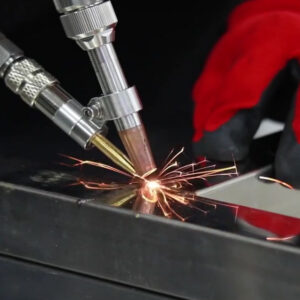 The History of Welding
The History of Welding
Ancient Beginnings
Welding is an ancient procedure, with examples of it being employed going back tens of thousands of years. Hearths, forges as tools have been used by great early civilizations; like Egypt, to produce bronze and iron tools and weapons. By 2000 BC metalsmiths were using the first forms of forge welding, that is heating the metals then the two pieces are hammered together to become a single piece. These techniques as a result have formed the base on which the advancement of welding was developed.
The Industrial Age: Major Developments
The welding advancement greatly improved during the 19th and early 20th century. This process of welding developed from electric arc welding that occurred in the early 1800s and uses an arc of electric current to melt metals. This made it possible to produce faster and stronger welds in shipbuilding, rail-road constructions and in constructions in general. Then, the adoption of resistance welding as a feasible method to join thin metal sheets proved to be helpful, especially for automotive manufacturers.
Modern Welding Technology
From the $1960s onwards, the technologies developed with lasers opened the option of welding with light instead of heat. The laser welding process was only applicable to a few specific fields initially but was later broadened and recognized as the new improved best solution to many problems because of the enhanced technology. Fiber laser welding machines are now known to be the newest generation in welding technologies that are prevalent in the market, combining high accuracy, reduced heat input, and increased joint strength.
Understanding the Welding Process
Welding Fundamentals
Welding is the process by which two metals are joined by melting their surfaces and similar areas to make them bonded. This is done employing heat or pressure with or without the use of a filler substance to add strength to the union. The foremost objective is the formation of enhanced and integrated connections that are capable of enduring stress and impacts.
Types of Welding Methods
Several traditional welding techniques are still widely used today:
Arc Welding: Uses electricity to heat and melt the metal.
MIG Welding (Metal Inert Gas): Uses a straight wire electrode with a more uniform consistency of high quality welds.
TIG Welding (Tungsten Inert Gas): Benefits it when producing small detailed artworks and when finely detailed control is needed.
Resistance Welding: Predominantly used in laminating thin plates, widely employed in automobile industries.
Challenges with Traditional Welding
The reliable and conventional techniques that are used in welding are limited by some effects such as heat distortions, combined with limitations related to the type of structure and the precision of the joints. These issues display a strong argument for modern welding applications such as fiber laser welding machines to offer improved performance.
Introduction to Fiber Laser Welding Machine
A fiber laser welding machine employs a fine localized laser beam that produces heat to fuse the metal surface at the welding site. This concentrated energy enables clean, neat seamed welds with low heat output beyond the actual welded area and hence, they are less likely to alter their shape. In fiber laser welding, the materials that can be welded include the ones which are reflective or those that are delicate, hence the wider market applicability.
How Fiber Laser Welding Machines Work
Core Components of the Machine
Fiber laser welding machines consist of several key parts:
Fiber Laser Source: It creates the high powered laser beam which is used in the ultimately destructive process.
Beam Delivery System: Guide the laser beam to the right spot it is required.
Control Unit: Controls the laser power, operating speed and the focal point of the laser.
Step-by-Step Welding Process
Laser Activation: The fiber laser source being used is a compact source that launches a Laser beam.
Beam Direction: The beam is well targeted and covers the specific area of welding requirement.
Material Melting and Fusion: The lasers deliver concentrated energy to the individual surfaces where they want the metal to melt and then solidify effectively bonding or welding the surfaces together.
Solidification: This kind of weld is very permanent, strong, and high quality since the laser is moved away as the metal cools down again.
Advantages of Fiber Lasers
Fiber lasers are highly energy efficient, a reliable source, and require minimum maintenance as compared to other lasers. By making fiber laser welding have these benefits they make it preferred especially when a task needs to be very precise.
Key Benefits of Using a Fiber Laser Welding Machine
Precision and Accuracy
Fiber laser welding machines offer accuracy that is hard to match with other conventional welding processes. The given focused laser beam is precise enough, the conditions that require high accuracy when performing work are suitable for such a tool.
Speed and Efficiency
Fiber laser welding productivity is high and can be used for the faster execution of complex weld procedures. As opposed to standard utilization of this technology that can help bring the duration down to a fraction of the old method, improved productivity can be realized.
Energy Efficiency and Cost Savings
Welding machines engaged in using fiber laser welds consume less energy than those applied in conventional methods implying that so many sums of money can be saved in the long run. Less energy is consumed by them thus they are suitable to be used since they are environmentally friendly.
Versatility with Different Materials
Common materials used with fiber laser welding machines include aluminum, stainless steel, copper and such. This is quite advantageous relative to other methods of welding, which generally face challenges on particular materials.
Enhanced Weld Quality and Durability
Fiber laser welding does not create many defects and impurities on the welded part compared to other types of welding. Focused heat helps eliminate distortion and leads to a high IPN that is clean with higher resistance to stress/pressure.
Applications of Fiber Laser Welding Machine
Automotive Industry
Fiber laser welding is commonly used in the automotive sector to create lightweight yet durable components. Precise, efficient welding allows manufacturers to reduce vehicle weight without sacrificing strength, contributing to fuel efficiency.
Aerospace Manufacturing
In aerospace, where reliability is paramount, fiber laser welding creates strong, precise welds crucial for components that endure high stress and extreme temperatures.
Electronics and Precision Equipment
Fiber laser welding is ideal for the electronics industry, where tiny, exact welds are often necessary. This method enables the joining of delicate parts without damaging sensitive electronics.
Medical Device Manufacturing
Medical devices require high precision and durability, and fiber laser welding meets these standards. It is used to create biocompatible and sterile parts, essential for medical tools and implants.
Fiber Laser Welding Machine vs. Traditional Welding Methods
Fiber laser welding machines outperform traditional welding methods in accuracy, efficiency, and adaptability. Here’s how they stack up, along with new perspectives on safety, maintenance, and future advancements.
Performance and Precision
Fiber laser welding offers unmatched precision. Unlike traditional methods like arc or MIG welding, fiber laser machines produce highly focused energy, allowing for controlled and narrow welds. This capability minimizes heat spread, reducing warping or distortion, which is common in traditional welding. The result is a clean, high-strength joint with minimal post-weld finishing required.
Safety Aspects of Fiber Laser Welding Machine
Fiber laser welding machines come equipped with advanced safety features that make them safer than traditional welding setups:
Protective Enclosures and Laser Shields: Fiber lasers often have protective housings or shields, reducing direct laser exposure risks for operators.
Interlock Systems: These systems prevent the laser from activating when panels are open, offering an additional layer of safety.
Automated Controls and Remote Operation: Modern fiber laser welding machines often allow for remote operation, lowering direct human contact during welding, which further improves safety.
By contrast, traditional welding methods may expose operators to high-intensity light, fumes, and heat, making proper protective gear and ventilation essential. Fiber laser welding provides a more contained, automated approach, which is both safer and more efficient.
Power Level Options for Different Applications
Fiber laser welding machines offer a range of power levels tailored to various industrial needs:
Low-Power Fiber Lasers: Ideal for fine tasks like electronics or jewelry welding. These machines allow for high control of thin metals without damaging surrounding materials.
Medium-Power Fiber Lasers: Suitable for general applications in industries like automotive or small-scale manufacturing. They can handle a range of materials without needing extreme power.
High-Power Fiber Lasers: Used in heavy manufacturing, shipbuilding, and aerospace. High-power machines can penetrate thicker metals quickly, delivering robust welds in high-stress applications.
Choosing the right power level ensures efficiency and prevents material damage. Traditional welding methods lack this flexibility, often relying on the operator’s skill to manage heat and penetration depth manually.
Maintenance and Longevity
Fiber laser welding machines generally have low maintenance requirements, making them highly reliable:
Routine Cleaning: Fiber laser components require periodic cleaning to maintain optimal beam quality.
Calibration: Regular calibration ensures precision and consistency in welds, a process often automated in fiber laser machines.
Component Durability: Unlike traditional welding electrodes or fillers that wear out, fiber lasers last longer, with fewer consumables and wear points.
In traditional welding, electrodes, tips, and other components need frequent replacement. Fiber laser machines reduce these needs, improving long-term durability and reducing downtime.
Environmental and Energy Efficiency Benefits
Fiber laser welding is significantly more energy-efficient than traditional welding. Here’s why it’s more sustainable:
Lower Energy Consumption: Fiber lasers require less energy to produce powerful, focused beams, reducing overall operational costs.
Reduced Material Waste: The precision of fiber laser welding minimizes waste, as materials are not over-melted or distorted, which often requires post-weld trimming.
Minimal Emissions: Traditional welding methods produce more fumes and emissions, whereas fiber laser welding, with its contained setup, produces fewer byproducts, contributing to a cleaner manufacturing environment.
This energy efficiency not only saves costs but aligns with eco-friendly manufacturing practices, benefiting both the business and the environment.
Why Choose Business Point International for Fiber Laser Welding Machine?
Quality Products
Business Point International offers durable and efficient fiber laser welding machines. Their products meet high standards, delivering reliable performance and long-term value.
Comprehensive Support
They provide strong after-sales support, assisting with installation, training, and maintenance. This support helps customers maximize their investment in fiber laser welding.
Diverse Product Range
In addition to fiber laser welding machines, Business Point International supplies a range of industrial equipment, including laser cutting and digital printing solutions, to meet diverse manufacturing needs.
Conclusion
Fiber laser welding machines represent cutting-edge welding technology. They provide manufacturers with unmatched precision, speed, and flexibility, accommodating the growing demands of modern industries. As welding technology continues to evolve, fiber laser welding stands out as a powerful solution, especially for sectors requiring high-quality, durable welds. Choosing Business Point International for your fiber laser welding machine needs ensures access to top-quality machinery, expert support, and a wide range of industrial solutions. Fiber laser welding is not just a trend. It’s the future of efficient, sustainable, and precise welding for businesses worldwide.

